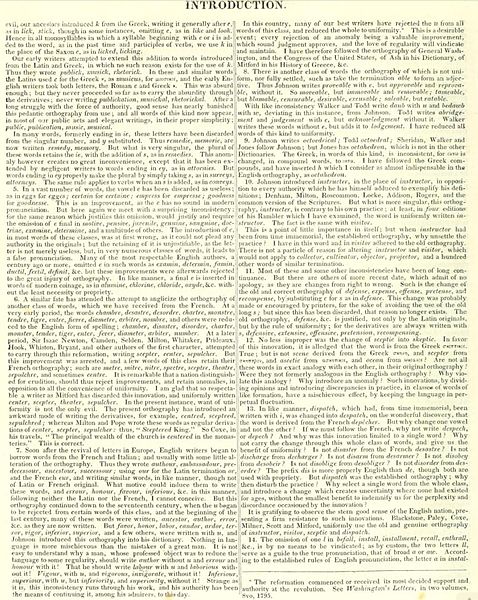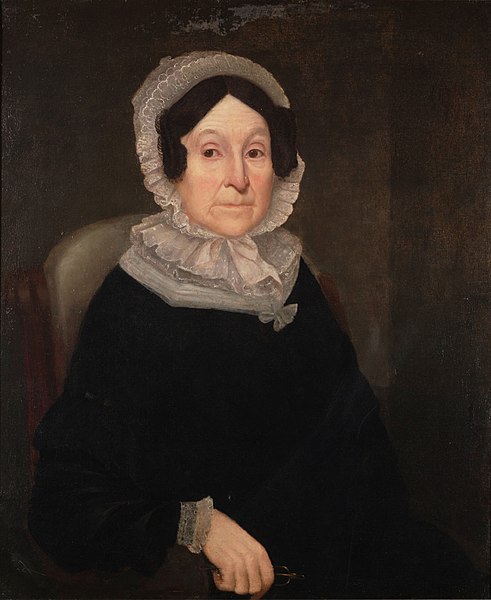Webster's Dictionary is any of the English language dictionaries edited in the early 19th century by Noah Webster (1758–1843), an American lexicographer, as well as numerous related or unrelated dictionaries that have adopted the Webster's name in his honor. "Webster's" has since become a genericized trademark in the United States for English dictionaries, and is widely used in dictionary titles.
Title page of the 1828 first edition of the American Dictionary of the English Language featuring an engraving of Noah Webster
Advertisement for the New International Dictionary from the October 8, 1910, issue of The Saturday Evening Post
Merriam-Webster's eleventh edition of the Collegiate Dictionary
Image: Webster Orthography 1828 (4 14)
Noah Webster Jr. was an American lexicographer, textbook pioneer, English-language spelling reformer, political writer, editor, and author. He has been called the "Father of American Scholarship and Education". His "Blue-backed Speller" books taught five generations of American children how to spell and read. Webster's name has become synonymous with "dictionary" in the United States, especially the modern Merriam-Webster dictionary that was first published in 1828 as An American Dictionary of the English Language.
An 1833 portrait of Webster by James Herring
A portrait of Webster by Samuel Morse
Webster's home in New Haven, Connecticut, where he wrote An American Dictionary of the English Language; the home was later relocated to Greenfield Village in Dearborn, Michigan.
Webster's wife, Rebecca Greenleaf Webster








